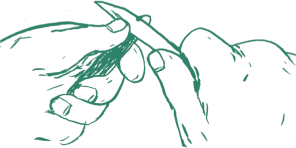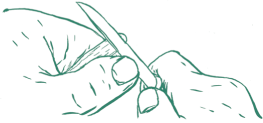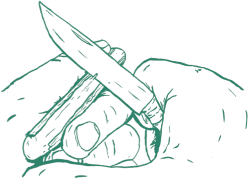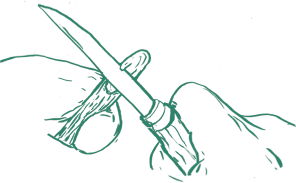2
Doorstop
There’s nothing more aggravating than watching a door slowly closing after you’ve set it open. But while doorstops are inexpensive, they’re also simple to carve. You may find that a wooden doorstop will perform better than the usual plastic alternative too, creating more friction with which to steady a heavy door. Whittling the sloping face of a rustic, wooden doorstop is also a great way to get to grips with another important carving stroke: the pull cut. With a length of wood drawn firmly in towards your knife using one hand, the blade will cut smoothly, held tightly in the other hand.


1. Using short push cuts, whittle off the edges from one end of a straight stick of about 10cm (4in) in length. Make sure that your forefinger is tucked safely away from the direction of the cut.

2. Whittle this same end into a soft, rounded point by further shortening the length of your cuts.

3. Create a flat surface on one of the sides by shaving towards you using a paring cut. Angle the blade slightly upwards to avoid it cutting too deeply, and keep fingers tucked in low, away from the path of the blade.

4. Turning the wood over, cut a slope at the opposite end from the rounded point, using a pull cut. This will create the slope that goes under the door. Do this by holding the knife still and pulling the wood towards you. Repeat this pull cut until the slope is finished.




